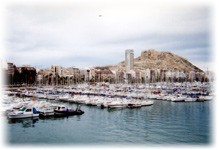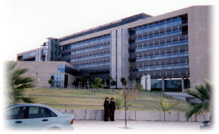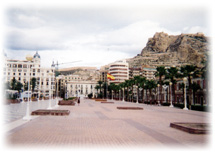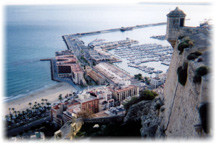 |
 中国・馳名商標の認定をうけるまで 中国・馳名商標の認定をうけるまで
馳名商標は中国商標法第13条で規定されており、中国において関連公衆に広く認知され、高い名声を有する商標と定義されています。近年、外国企業も馳名商
標の認定をうけることができるようになりましたが、現在までのところ、日本企業の商標で馳名商標の認定をうけたのは20ブランド程度にとどまっています。
このことからも認定を受けることがいかに難しいかが分かります。
弊所でも中国・上海でおきた商標権をめぐる係争において、侵害訴訟、商
標登録異議申立事件に関与しました。最終的に、訴訟では勝訴判決、異議申立事件でも商標登録取消の裁定をうけることができましたが、ここで決定的な役割を
果たしたのが馳名商標です。以下、事件の概略をご説明したいと思います。
背景 カシオ計算機株式会社は、中国において「?西欧(称呼 カ
シオ)」、「CASIO」、「?西欧 CASIO」など多数の登録商標を所有しています。そのようななか、2005年7月、上海の電動車製造会社の出願に
よる同一商標「?西欧」、「KAXIOU」が公告されました。

 1.商標権侵害訴訟 1.商標権侵害訴訟
この上海の電動車製造会社は、上記出願だけでなく、商標「?西欧」及び「KAXIOU(カシオの中国語発音表記、ピンインという。) 」を電動車 (アシストバイク) に付して販売していました。
こ
れに対し、カシオ計算機株式会社は、当初第9類、第14類の先登録商標の著名性を主張しておりましたが、裁判所では著名性の判断をしないとのことにより、
「陸上車」を指定商品とする自社登録商標「CASIO」の商標権に基づいて商標権侵害訴訟を行いました。相手方が製造販売する電動車の商標の使用行為が商
標権の侵害に該当するというものです。
2007年4月、第一審となった上海市第一中級人民法院は、これらの商標や商品の類似性、商標
「CASIO」の知名度の高さを認め、商標権侵害の成立を肯定しました。相手方は、これを不服として上海市高級人民法院に控訴しましたが、ここでも第一審
判決が維持され、商標権侵害の成立が認められました。
ここで重要なのは、「CASIO」と「?西欧」との類似性が認められたことです。「?西欧」
のピンイン表記は「KAXIOU」であって「CASIO」ではないため、類似性が認められるのは難しいからです。これは、長年の商標の使用により、中国の
一般公衆の間で「?西欧」=「CASIO」との認識ができたことを中国の司法機関が認定したという意味で画期的な判決と思われます。

 2.商標登録異議申立 2.商標登録異議申立
侵害訴訟と前後しますが、2005年9月、カシオ計算機株式会社は、相手方商標の登録取消を求めて商標局に登録異議申立を行いました。
こ
こでは、カシオ計算機株式会社の商標「CASIO」、その中国語表記「?西欧」は中国国内ばかりでなく世界的に広く登録されていること、「CASIO」が
「?西欧」に対応する商標として中国公衆の間で認知されていることなどを述べました。さらに、証拠として上述の上海市高級人民法院の判決も参考に供しまし
た。
しかしながら、2008年3月、商標局は、カシオ計算機株式会社の商標「CASIO」及び「?西欧」の知名度や、混同が生じる可能性を証明する証拠が不十分として、相手方商標の登録を維持しました。

 3. 評審(再審)請求と馳名商標申請 3. 評審(再審)請求と馳名商標申請
登録維持の決定を不服として、2008年4月、カシオ計算機株式会社は異議決定に対する評審(再審)を請求し、あわせて、登録商標「CASIO?西欧」について「馳名商標」の申請も行いました。
2009
年5月の評審では、カシオ計算機株式会社の商標「CASIO」および「?西欧」が著名であること、すなわち、商標法第13条の馳名商標であることが認定さ
れました。さらに、相手方商標とカシオ計算機株式会社の商標が同一であること、出所の混同を生じさせる可能性があることが認められ、最終的に、相手方商標
「?西欧」の登録は拒絶されました。

 4. まとめ 4. まとめ
馳
名商標の申請には複雑な手続きが必要であるため、当事者にとっては負担の重い手続です。そのようななか有利な結果を得るために、日ごろより商標のブランド
力を高めておくことが大切といえるでしょう。審理では、中国国内での商標権保護のPR活動や広告宣伝など多くの資料が必要となるため、できる限りたくさん
の証拠を収集することも重要です。さらに、膨大な証拠のなかから適切な証拠を選択すること、認定過程での各機関の担当者と密にコミュニケーションをとり、
理解を深めてもらうことも、審理の迅速を図る上で重要となってきます。
中国経済が活発化する現在、中国における商標権にまつわる係争はますます増加するものと考えられます。そうすると、今回の係争でもキーとなった馳名商標制度の重要性はますます高くなっていくでしょう。

 Notice of Revision to the Design Law Notice of Revision to the Design Law
Expansion
of the Applicability for the Protection of Screen Designs and
Modifications to the Requirements for Filing Applications for the
Similar Design by the Same Person.

We would like to hereby inform you that recently the Japanese
Design Law has been revised and from April 1st of this year the area
covered by the Design Protection Law has expanded.
The significant areas for the expansion of the articles protected are:
- Broadening of the coverage of screen design protection
- Modifications
to the requirements for the filing of applications for the similar
design by the same person and if the application is not made on the
same day there is the possibility to make use of a related design
procedure.
Please refer to the following details

 1.Expansion of the Applicability for the Protection of Screen Designs 1.Expansion of the Applicability for the Protection of Screen Designs
(1)
Heretofore “only the images that are absolutely necessary for the
formation of an article” have been protected and although items such as
the time displays on liquid crystal clocks, the selection menus and so
on shown on the front page of mobile phones have been designated
as protected articles, the images used in the operation of the
aforementioned articles, for example the screen displaying the address
book feature on a mobile phone, and other display features related to
the equipment shown on screen display designs, have been outside
the jurisdiction of the Design Protection Law.
| (2)
However, according to this revision, certain articles that relate to
screens on operating features other than the first menu screen, such as
the designs for the display screens on recording time-setting devices
for recording and playback equipment for video discs, television
monitors that can be used simultaneously, or the design of display
screens on other items such as the screen displaying the address book
feature on mobile phones, have been newly added as articles for design
protection. |
Example of a Newly Protected Screen Design
(Magnetic disc recorder)

 The operational feature of the magnetic The operational feature of the magnetic
disc recorder shown on the TV screen
|
|
|
In addition, according to the revision, the design of display screens
for business software or game software that are sold independently of
the main product, are not included as articles for protection.

 2. Modifications to the Requirements for Filing Applications for 2. Modifications to the Requirements for Filing Applications for
the Similar Design by the Same Person
(1)
Regarding the protection of mutually similar designs, heretofore
Article 9 of the Design Law (prior application) has made it an
exception to protect related designs and enable the exercise of rights
for each design, limited to the case whereby the same applicant files
the application on the same day.
(2)
The revision this time has modified the part of the law regarding
related designs which have been accepted only when applications are
made on the same day. The revision limits the registration of
related design applications to the period up until the day that the
application of first design is laid-open as a first publication.
This revision simplifies the usage of the system for related designs in
that it is not limited to the case whereby variations of a design are
created during the same time frame, but also accepts the protection of
design rights for design variations that are additionally developed
after watching market acceptance or trends after the initial design is
put on the market.

 3.Other Revised Points 3.Other Revised Points
In addition to the above points, the following points have also been revised.
| ① |
Extension
of the period for the continuation of design rights (heretofore 15
years from registration - revised to 20 years from registration) |
| ② |
Concretization of the range of similarity of designs
(Concretized that judgment of similarity is made not by the creator of the design but from the viewpoints of consumers) |
| ③ |
Article
3, item 2 of the Design Law (Modification to the application of the
policy regarding applications made by the same person) |
| ④ |
Revision to the protection of the confidentiality of designs
(The request of confidentiality is approved not only at the time of
filing the application but also at the time of paying the registration
fee) |
| ⑥ |
Revision
of the applicability of the policy regarding cases other than the loss
of novelty (increased to 30 days from the period of filing a written
representation) |
| |
|
Please contact us if you have any queries regarding the above matters.
We will be happy to answer your questions.
 Notice about the commencement of Retail Service Trademark System Notice about the commencement of Retail Service Trademark System
As
from April 1st of this year, we hereby inform you that a system to make
possible the registration of trademarks or brands for retail services
has been introduced.
The system for retail
service trademark protection is a system for protecting the trademarks
that retailers or wholesalers use, including trademarks used for signs
on their premises, shop assistants' uniforms, or shopping carts, and
also covers mail order sales.
The trademarks
used by retailers heretofore have been protected by the procedure to
register trademarks for products being handled. Retail services have
been protected by the acquisition of rights for the products specified
in Nos. 1 to 34 of the total 45 classifications for products and
services. Although price-tags for products and folded leaflets, for
example, have been protected until now, the display of trademarks on
such items as shopping carts or shop assistants’ uniforms, has not been
protected.
However, through the
introduction of the retail services trademark system this time, in
addition to the heretofore protected product trademarks on price-tags
and folded leaflets, the trademarks shown on shopping carts, shopping
baskets and shop assistants’ uniforms are to be inclusively protected
as well.
Specifically, services including retail sales have been added to retail service classification No. 35.
 Hereunder the following services offered by department stores and general supermarkets have been newly approved: Hereunder the following services offered by department stores and general supermarkets have been newly approved:
| (Retail
services or wholesale services for a variety of goods in each field of
clothing, foods and beverages, and living ware, carrying all goods
together) |
For
trade in any other individual product that is not mentioned in the
table above, it is necessary to file an application with a description
of the product which specifies the type of the product to a certain
level.
 For example, in the case of the trade in clothing, the following services have been newly designated: For example, in the case of the trade in clothing, the following services have been newly designated:
| (Retail services or wholesale services for clothing) |
And in line with this, the kind of products in retail sales must be
specified in detail and an application should be filed accordingly.
A particular feature of the cases where an application is made for
retail sales of a specific product, the trademark of the specific
product is identified and a cross-search takes place. In the case of
filing for retail sales of a specific product, an examination of the
trademark applied and registered for such specific product will also
take place.
 For example, in the above case when an application is made for: For example, in the above case when an application is made for:
| Retail services or wholesale services for clothing |
apart from the trademark for the retail sales of clothing, there has to
be an examination of the application and registration of the trademark
according to the product classification No.25:
and provisionally in the case of somebody else having already made an
application for, and granted with registration of, the same or similar
trademark for “clothing” within the classification No.25, rights to the
retail sales of the clothing cannot be granted.
However, in the case of it being the same person, this is not applicable.
Regarding
the ‘department stores and general supermarkets’ mentioned above, in
the case when a cross-search of a product classification does not take
place, this is because department stores and general supermarkets
handle a broad spectrum of products and their relationship with
specific products is deemed to be weak. Also, in the case of
specifying and making an application for retail services for products
in more than one category as shown below, the applicant may be
requested to present written proof of usage of the trademark that the
applicant applied for at the stage of examination in order to ascertain
whether the trademark being applied for is being used in the specified
retail sales service.
Retail services or wholesale services for foods and beverages
Retail services or wholesale services for cosmetics, toiletries, dentifrices, soaps and detergents
Retail services or wholesale services for clocks, watches and spectacles [eyeglasses and goggles] |
Also,
applications made between April 1st and June 30th are dealt with as
applications filed on the same day in a limited case where such
applications are for retail sales. In this case, applications
that can show actual proof of trademarks being used will be given
priority for registration, and in the case that both trademarks are
being used, it will be possible that both trademarks will be accepted
for registration. We will be happy to answer any questions you have
about this system, so please do not hesitate to contact us. Since
the commencement of this retail services trademark system on 1st April,
our institution has already been dealing with a large volume of
applications to utilize this system.

 The Story of our Struggle ot Acquire the First Design Application in the European Community The Story of our Struggle ot Acquire the First Design Application in the European Community
In
this report I would like to give an account of the experiences we had,
in particular the interesting aspects, when filing our first design
application in Europe.
 First
of all, I would like to show these pictures of OHIM (Office for
Harmonization in the Internal Market) and the cityscape of Alicante
(Spain) where OHIM is located and give a simple explanation about what
happened. First
of all, I would like to show these pictures of OHIM (Office for
Harmonization in the Internal Market) and the cityscape of Alicante
(Spain) where OHIM is located and give a simple explanation about what
happened.
|

View of Santa Barbara Castle |
 The
Europe Community Design System is a unified set of regulations that
covers the whole European Community and is a relatively new system that
came into effect on April first 2003. The
Europe Community Design System is a unified set of regulations that
covers the whole European Community and is a relatively new system that
came into effect on April first 2003.
In this design system,
there are two different systems. One is an Unregistered Community
Design System in which the design right is protected within the public
domain of the whole European Community for a period of three years from
the effective date that a design is used even without following
registration procedures.
The other system is a Registered Community Design System which is able
to provide protection of the design right for five years after the
application has been made. It is based on a registered procedure
(effective for a maximum of 25 years if renewed).
The application system for registered designs in the Registered
Community Design system started on April first 2003. So the
application date should be from April first 2003 but the actual
reception of applications started on January first 2003.

The Front Entranceway to OHIM |

View of the Outside of OHIM |
 On
the request of our client, we made preparations to obtain the first
application number that would represent the commemoration of being the
first to apply to this new system. We gave up our New Year's holiday,
and went to OHIM in Alicante, Spain, to follow the application
procedures. On
the request of our client, we made preparations to obtain the first
application number that would represent the commemoration of being the
first to apply to this new system. We gave up our New Year's holiday,
and went to OHIM in Alicante, Spain, to follow the application
procedures.

View of Santa Barbara Castle
|
 As
there was no direct flight from Japan to Alicante, we had to make two
transfers before arriving in Alicante. This meant that we ended up
spending the whole day traveling. We looked enviably at the people who
were gathering for the countdown to the New Year and were in a fluster
as we couldn’t get a taxi to go to OHIM. But with the cooperation of
the local agent, we could file the application form at the very moment
it became January first 2003. As
there was no direct flight from Japan to Alicante, we had to make two
transfers before arriving in Alicante. This meant that we ended up
spending the whole day traveling. We looked enviably at the people who
were gathering for the countdown to the New Year and were in a fluster
as we couldn’t get a taxi to go to OHIM. But with the cooperation of
the local agent, we could file the application form at the very moment
it became January first 2003. |
 Although
we dropped our application into the special post box which was
installed outside the OHIM building, when the other applicants who were
also aiming to get the first application like us saw us putting our
application in the box they decided to send their applications by fax. Although
we dropped our application into the special post box which was
installed outside the OHIM building, when the other applicants who were
also aiming to get the first application like us saw us putting our
application in the box they decided to send their applications by fax. |
 View from Santa Barbara Castle
View from Santa Barbara Castle |
|
 Which
would be the real first application was in the hands of OHIM. We felt
nervous as we were waiting for the result. Fortunately, we were lucky
enough to obtain the first application. Which
would be the real first application was in the hands of OHIM. We felt
nervous as we were waiting for the result. Fortunately, we were lucky
enough to obtain the first application.
In this regard, although
we had a hard time from the preparation period, we were honored to have
our client obtain the first application for the new system in Europe
and were able to deal with all these procedures.
Finally,
we would like to express our appreciation to our client who gave us
this special request, and to the local agent, Mr. David Musker,
(http://www.jenkins-ip.com/peop/partner/d_musker.htm) for his great assistance.
|
|
 |

